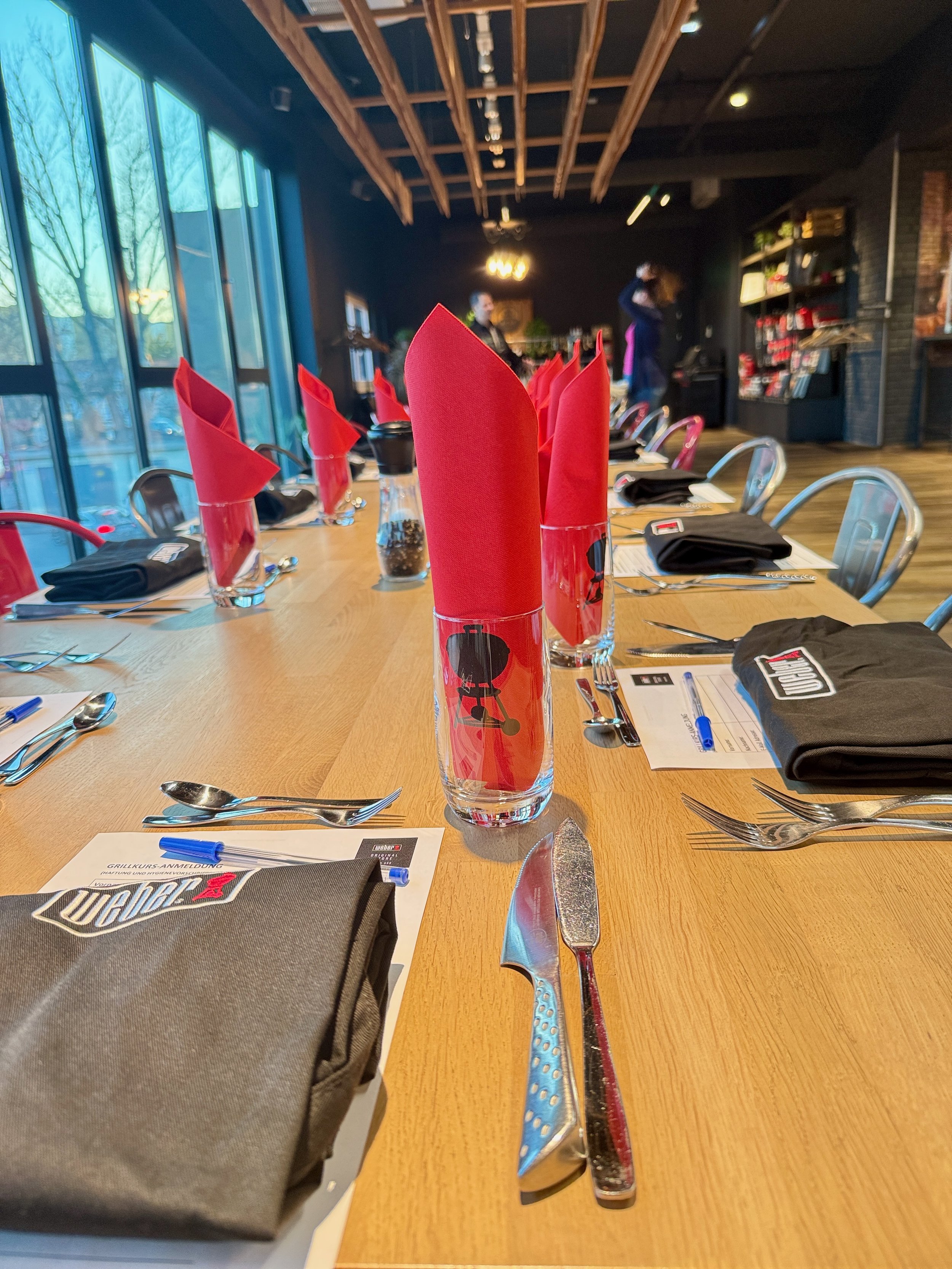Like Chicago, Vienna is known as a windy city. Also like Chicago, Vienna boasts a strong Weber presence. In this European and truly international metropolis, Vienna embraces countless history, natural science, and art museums and hosts a variety of music venues. Its history is rich within its cobblestone streets and walkways, spacious stone buildings, and extensive monuments. South of Old City and its encircling “ring”—the curving main street that originally was a wall—lies the Weber Original Store and Grill Academy, that no doubt keeps grilling hot throughout Austria and Europe.
The Store and Academy include a robust online store, all under the exclusive license of Grill & Co and managed by Matthias Fuchs in Vienna and Benedikt Mitterlehner from Upper Austria. Matthias’s wife, Sabrina, manages business sales at GA events. Matthias—a marathon runner, father of two boys, and whom one employee described as a “boss among bosses”—has an infectious energy. He brings his passion to the activities and classes he designs for the Academy. Located next to a busy thoroughfare, the Grill Academy comprises two levels of classrooms and grilling spaces with a large retail store occupying half of the first floor.
Matthias is one of the four principals for the startup business known as The Weber BBQ Kitchen. His store features several model installations, the Kitchen composed of a variety of modular components with the quality of custom-built furniture—kitchen counters, oversized drawers for grilling equipment and tools, mini-fridge, wine refrigerator, cabinetry, and shelving. Crafted exclusively for the outdoors, the BBQ Kitchen incorporates both Weber charcoal or gas grills seamlessly into its design. Customers can even envision their kitchen online to accommodate their space. Their order is then manufactured in Germany, shipped to the customer’s local Weber Store, and installed by store personnel. Years ago when I was a guest at Weber’s US headquarters, an employee attending my presentation asked what one product I would like to see Weber develop next. “The BBQ Kitchen,” I immediately responded, “but it’s already been designed in Austria. Bring it to the States, please.” The BBQ Kitchen is currently available at Weber Stores throughout Europe and continues to make inroads into other markets, most recently Turkey. I was impressed with the integrity of the materials, all designed to weather the elements. The Kitchen also offers an impressive number of color and material choices. I was delighted to see samples of all of them.
With little time left to linger in the store before the class, Margie and I met Patrick Bayer, the resident grill master, who gave us a warm welcome and a quick tour of offices. He then guided us to the second floor classroom. In my previous correspondence, Matthias graciously gifted two grilling classes to Margie and me. The first, a Thursday night Mediterranean Cooking class with renowned live fire chef Yulia Haybëck, was unexpectedly cancelled just days before our trip. We also missed meeting the Harold Brothers because of a scheduling mixup; the brothers raise award-winning pigs and are frequent instructors at the Grill Academy. In retrospect, I wish we had planned a few more days in Vienna. Sometimes in arranging these Weber excursions, I find that circumstances change suddenly, and no amount of planning can anticipate them.
















